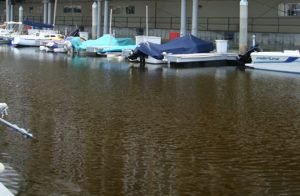Experts convened to improve understanding of interactions between HABs, OAH

SCCWRP has convened a group of scientific experts on harmful algal blooms (HABs) and ocean acidification and hypoxia (OAH) to study the relationship between these two coastal stressors, especially how they interact to adversely affect coastal ocean health.
During a two-day workshop at SCCWRP in September, the 14 scientific experts – including from SCCWRP – discussed how existing marine monitoring efforts could be tweaked to improve understanding of the interactions of HABs and OAH.
Monitoring of HABs and OAH has historically not been well-coordinated, with relevant indicators and metrics siloed within each respective field. However, a growing body of evidence has indicated that OAH-HABs interactions present a growing risk to coastal habitats.
The expert group will summarize its recommendations in a report and journal manuscript expected to be published next year.
More news related to: Climate Change, Eutrophication, Harmful Algal Blooms, Ocean Acidification and Hypoxia